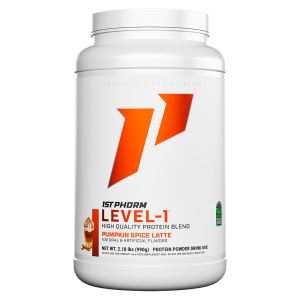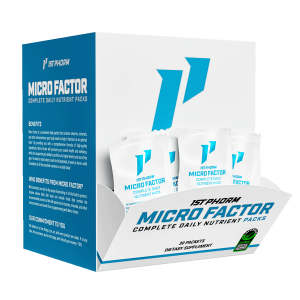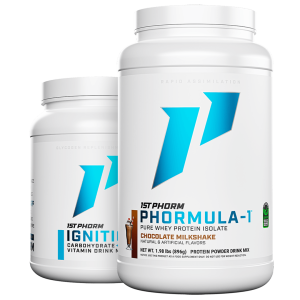BRAND NEW FLAVOR
Top Rated Products

SHOP APPAREL
OUR BLOG

Oct 07,2025-2 min read
RAINBOW SHERBET PROTEIN
GUMMIES
Looking for a fun, guilt-free snack that actually
supports your protein goals?
These Rainbow Sherbet Protein Gummies are
the perfect solu…

Sep 30,2025- 2 min read
HIGH-PROTEIN CHICKEN NOODLE
SOUP
There’s nothing better than a warm bowl of
chicken noodle soup,and this healthy slow
cooker version makes it easy!
With lean chicken bre…

Sep 23,2025·2 min read
MACRO-FRIENDLY ICED OATMEAL
MUFFINS
On the hunt for a healthy muffin recipe that
supports your goals and tastes amazing? Looks
like your search ends here.
These Macro-Friend…
Classic Recommendation.
The Modern Fuel Source: Decoding the Phenomenon of the Protein Bar
In the relentless pace of contemporary life, where time is the most precious commodity, the need for efficient, portable, and nutritionally dense food has spurred the creation of a vast and rapidly evolving industry. At the heart of this market is the humble yet highly engineered protein bar. More than just a snack, this compact rectangle of concentrated nutrition has become a defining symbol of modern fitness culture, an essential tool for busy professionals, dedicated athletes, and anyone striving to maintain a balanced diet amidst a hectic schedule. To understand the pervasive influence of the protein bar is to examine its history, delve into the complex nutritional science that underpins its formulation, and explore the dizzying array of textures, flavors, and ingredient philosophies that have shaped its journey from a niche athletic supplement to a mainstream dietary staple.
The roots of the protein bar can be traced back to the early days of space exploration and elite endurance sports, environments where high caloric density and precise macronutrient delivery were absolutely critical. Early iterations were often dense, functional, and frankly, unappetizing—designed purely for survival or peak performance, not pleasure. They were a necessary fuel, a compressed package of sustenance meant to minimize bulk and maximize energy. The commercial breakthrough, however, occurred in the late 20th century, coinciding with a burgeoning interest in bodybuilding and low-carbohydrate dieting. As protein began to be recognized by the mainstream as the essential building block for muscle repair, satiety, and metabolism, the demand for convenient protein delivery systems exploded. This shift marked the transition of the protein bar from an austere performance product into a consumer-friendly food item, prompting manufacturers to invest heavily in flavor technology and texture improvement, aiming to disguise the often chalky or medicinal taste associated with concentrated protein powders.
The true complexity of the protein bar lies in its careful construction and the intricate balance of its macronutrients. At its core, the primary goal is delivering a substantial amount of protein—typically ranging from 15 to 30 grams—in a small, shelf-stable package. This protein often comes from sources like whey concentrate or isolate (for high biological value and quick digestion), casein (for slower, sustained release), or plant-based blends (like pea, soy, or brown rice protein) to cater to different dietary needs. Beyond the protein source, the formulation requires a careful balancing act involving fats, carbohydrates, and, most critically, texture agents and sweeteners. To achieve a desirable flavor and chew, formulators often rely on a combination of fibers, sugar alcohols (such as erythritol or maltitol), and various syrup binders to hold the bar together and provide a satisfying mouthfeel. This is where the nutritional label requires careful scrutiny, as many bars, in their quest for palatability, inadvertently load up on added sugars and unhealthy fats, blurring the line between a genuine health tool and a glorified candy bar.
The market has responded to consumer demands with a fascinating divergence in product types. One major category is the performance bar, typically higher in protein and often containing specific post-workout recovery ingredients like BCAAs, with a focus on minimal sugar to support lean muscle gain. These are the descendants of the original functional bars, still prioritizing nutrient ratios above all else. A second, increasingly popular category is the meal replacement bar. These are larger, higher in calories (often 300+), and designed to provide a more comprehensive macronutrient profile, including a significant amount of complex carbohydrates and healthy fats, positioning them as a viable alternative to a skipped lunch or breakfast. A third and rapidly growing segment is the clean label bar, driven by the demand for simple, recognizable ingredients. These bars often feature dates, nuts, seeds, and minimal additives, with protein derived exclusively from whole-food sources like egg whites or nut butters. They appeal to consumers wary of artificial sweeteners and complex chemical formulations, reflecting a broader trend in the food industry toward transparency and natural sourcing.
The debate surrounding the protein bar often centers on its role in a holistic diet. Advocates champion its unparalleled convenience; it is an ideal rescue food for moments when proper nutrition is otherwise unavailable, helping individuals meet their daily protein goals without resorting to fast food. For vegetarians, vegans, or those with busy travel schedules, a reliable, portable source of complete protein is invaluable. Furthermore, for those managing weight or blood sugar, the high protein and fiber content in well-formulated bars can promote satiety, helping to control appetite and reduce overall caloric intake more effectively than a simple carbohydrate snack. However, critics rightly point out the hidden pitfalls. Many bars are deceptively high in sugar alcohols, which can cause digestive distress, or saturated fats, particularly those coated in chocolate-like compounds. Furthermore, the reliance on highly processed protein isolates and artificial flavorings raises concerns about the long-term impact of consuming such hyper-engineered foods over whole, unprocessed options. The key, therefore, lies in discernment: a protein bar is a tool, and its effectiveness depends entirely on the quality of its formulation and the context of its consumption. It is a supplement to a balanced diet, not a substitute for wholesome meals.
Looking forward, the future of this category is driven by innovation in taste and ingredient science. Flavor fatigue is a persistent challenge, prompting developers to constantly seek novel combinations and better masking technologies to eliminate the typical “protein aftertaste.” We are seeing sophisticated flavor trends emerge, moving beyond basic chocolate and peanut butter to gourmet profiles like salted caramel, key lime pie, and adaptogenic coffee blends. On the ingredient front, the focus is increasingly on sustainable and novel protein sources. Insect-based proteins, while still niche, are entering the conversation for their impressive sustainability profile. Fermented proteins and lab-grown microbial proteins offer future possibilities for highly pure, allergen-friendly, and ecologically responsible protein delivery. The ultimate goal is to create a bar that is functionally identical to a whole-food snack—delicious, minimally processed, and nutritionally rich—while retaining the superior shelf-stability and portability that defines the category. The modern protein bar is a marvel of food engineering, constantly evolving in its attempt to seamlessly blend the efficiency of science with the pure, primal pleasure of eating. It stands ready to fuel the next generation of life’s demands, confirming its status as the quintessential food of the modern, always-on world.




























